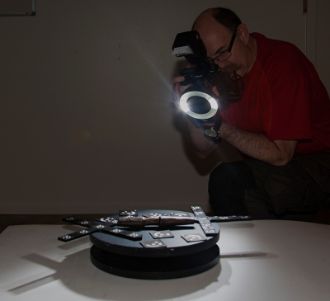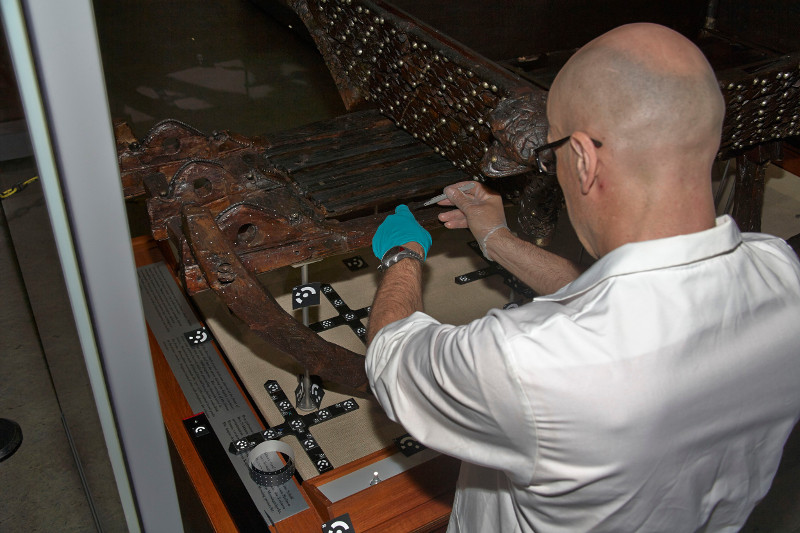
The existing documents from the Oseberg find date back to 1900–50 and need to be updated. Even though these documents provide information about the excavations carried out in 1904 and the first conservation process, a lot of information is missing. Not all objects described in the Oseberg catalogue are visually documented. Furthermore, the wooden objects have undergone different conservation treatments, which could have changed its structure and appearance. There is no doubt that the alum-treated wood and some other artefacts (e.g., Oseberg Viking ship) must be documented again. This time, high-resolution equipment is used to provide better and more detailed images; these can be used to create 3D-models and be archived in databases available for the general public.
How are the objects documented?

In addition to regular photography, the objects are documented with the help of an optical scanner. Altering lightning conditions are emitted into an object and two cameras capture images at slightly different angles; the surface of the object is determined by a computational comparison of the two images. The entire object is scanned by placing measurement points around it, which function as reference points and make it possible to align the different images to reproduce the object. At the same time, the images of the scanned surface can be combined with photographs to obtain a coloured 3D-object.

This documentation method is extremely accurate; each square millimetre of an object can consist of 60–2500 measurement points, depending on its size and degree of detail. These points are combined into a network of triangles, which defines the surface of the object. Each triangle has its own colour value and each of its sides measures a few tenths of a millimetre, forming just a very small part of the 3D-model’s surface. The 3D-models contain information about the actual dimensions of the object, making it possible to calculate its volume and surface precisely.
What are the benefits?
3D scanning is a great choice for documenting the objects from the Oseberg find. It is a relatively fast method that requires minimal handling of the fragile objects. Furthermore, this documentation method provides a digital backup of the wooden artefacts, which facilitates:
-
Detection of changes: the condition of the wooden objects can be easier monitored, which allows faster interventions in case something happens
-
Re-conservation: every little detail of the object is documented, which allows more accurate repair/re-construction in case severe damage occurs
-
Accessibility: the 3D-models are made available for researchers and the general public